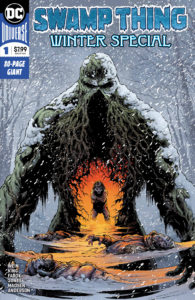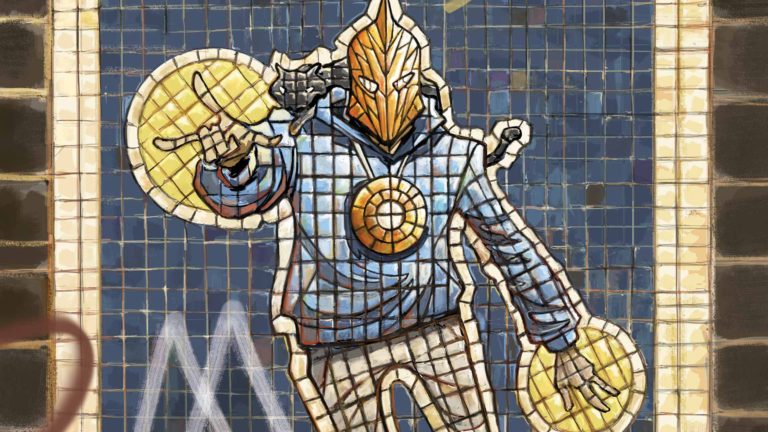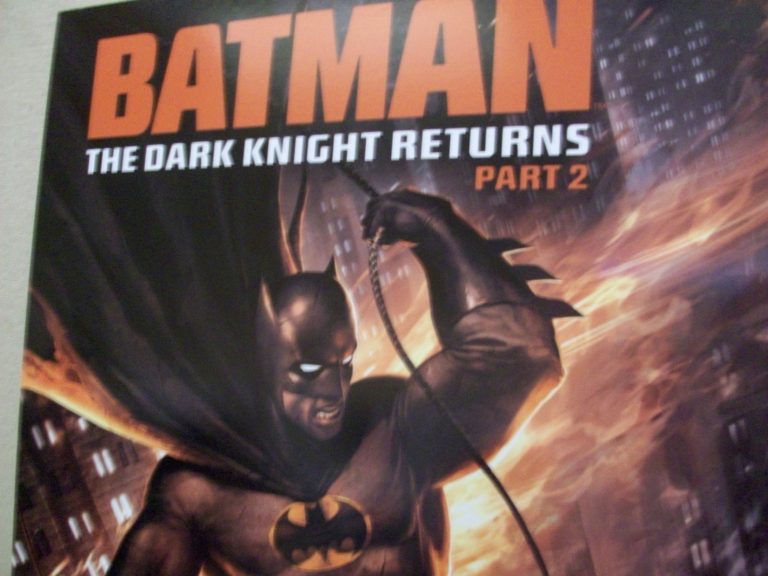 Swamp Thing Winter Special #1
Swamp Thing Winter Special #1
Publisher: DC
Story: Tom King; Len Wein
Pencils: Jason Fabok; Kelley Jones
Inks: Jason Fabok; Kelley Jones
Colors: Brad Anderson; Michelle Madsen
Letters: Deron Bennett
This “80-Page Giant” (a nice throw-back call-out on the cover to the Silver and Bronze Ages of DC Comics) publication by DC is more than just a great duo of stories featuring one of DC’s premiere horror characters, but it’s also an homage and a swan song for one of Swamp Thing’s co-creators, writer Len Wein. The book also includes a nice tribute to Swamp Thing’s other co-creator, Bernie Wrightson. Both Wrightson and Wein passed away in 2017, and this publication includes Len Wein’s last Swamp Thing story that he was working on at the time of his death.
The first of the two stories contained here is by current DC superstar writer Tom King, who actually channels the spirit of Len Wein’s classic Swamp Thing tales with a very horror-focused story that is accompanied by Jason Fabok’s and Brad Anderson’s art. The winter theme from the title of this special is very evidence in this first story, which involves Alec, cut-off from the Green and losing his power while trying to protect a young boy, trudging through a seemingly never-ending snow storm. King’s narrative style creates an unsettling feeling while reading, particularly due to the very loose sense of time. Scenes appear to move back and forth in time, and Swamp Thing is constantly needing to be reminded who he is and what he’s doing to protect the boy. Adding to that are Fabok’s and Anderson’s spacious panels and muted colors, creating a haunting, chilling atmosphere that perfectly accompany the story.
Following King’s story is a short, touching essay by Rebecca Taylor, one of DC’s editors, which acts as a dedication to the original creators, and then the book launches into its second story.
Len Wein’s story takes a different tactic, as it was intended to be the first issue of a new on-going series written by Wein. Although Wein had written the script, he was not yet finished with the dialogue and narration, but he had given direction to artists Kelley Jones and Michelle Madsen. DC made the decision to publish the story with the art only, without trying to have someone else attempt to create dialogue and narration for Wein’s script, and the effect is very powerful. It serves to show how great of a storyteller Wein was that the reader can infer from most of the scenes exactly what his intent was and the emotion behind the characters, but it also serves to exemplify the artistic talents of Jones and Madsen. There is more action, more characters, and more setting changes in this story that in the first, but even without the words, the art and the story are engaging and powerful.
Following this is the actual original script by Len Wein, which he wrote and sent to Kelley Jones so the art could begin. This section manages to be fascinating, heartbreaking, and heartwarming all at the same time. When reading comics, we often forget about the creative process involved, as only the finished product is visible. Seldom to readers stop to consider how the story was created, and the collaborative process that occurred between writer and artist. By showing Kelly Jones’ unobstructed art, then following with Wein’s original script, including his notes to the artist, DC gives readers a glimpse into the process that goes into its scores of monthly comics.
The script begins with Wein’s comment to Jones about how this new monthly publication will hopefully make them both rich and famous, and it’s these short notes and comments that make us stop and think. Writing was Wein’s job, of course, but writing is a different kind of job, and in his script, a sense of his excitement to be working on this property again is very evident, and then we remember that his life was cut short before this latest work of his could be published. Also throughout the script are notes to the artists, and it’s very obvious how much Wein respected and trusted the artists he was partnering with. Short comments in Wein’s script, such as “…watching the kind of sunset that only Michelle Madsen can color” illustrate what kind of person Wein was.
Following this are a few pages of art and tributes to both Wein and Wrightson which are a fitting end to the book.
Swamp Thing Winter Special #1 would be a good comic based on its content alone, but as a tribute to Len Wein, it is a very special issue and worth the higher price tag.
Martin Thomas
martin@comicattack.net




